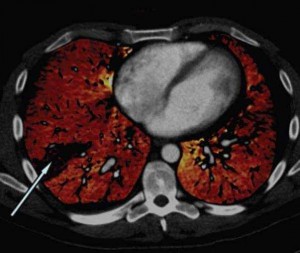-

Expert alert: Are CT scans safe?
ROCHESTER, Minn. — With questions lingering about the safety of medical imaging and the radiation that is used in some of those tests, Mayo Clinic radiation safety expert Cynthia McCollough, Ph.D., wrote a paper that provides clear answers that she hopes will allay patients’ fears.
Dr. McCollough wrote “Answers to Common Questions About the Use and Safety of CT Scans,” which was published Oct. 1 in Mayo Clinic Proceedings as a Q&A in an effort to provide credible, balanced information about how much radiation a CT scan delivers and what levels are considered safe.
which was published Oct. 1 in Mayo Clinic Proceedings as a Q&A in an effort to provide credible, balanced information about how much radiation a CT scan delivers and what levels are considered safe.
So, are CT scans safe? Yes, says Dr. McCollough.
Patients can get a prescribed CT scan without worrying, Dr. McCollough says. “Radiation has a bad rap. The Incredible Hulk and Spider Man were mutants created from some radiation exposure; that’s science fiction. The truth is we are all exposed to radiation every day of our lives, with no evidence that those low doses cause any long-term harm.”
Journalists: Sound bites with Dr. McCullough are available in the downloads.
MEDIA CONTACT: Ethan Grove, Mayo Clinic Public Affairs, 507-284-5005, email: newsbureau@mayo.edu
Areas that have higher background radiation levels (e.g., from the sun and radon in the ground) have lower cancer rates. If there is a cause and effect, it’s simply too small to measure. And, because of increased research and updates in technology, less radiation also is used these days in medical imaging.
“Over the past decade, the radiation doses used in CT have been cut by almost a factor of 2,” Dr. McCollough says. “The current dose levels are not dangerous, but if we can use less, we will. I can take two Tylenol for a headache and not worry about it being dangerous. But, if one Tylenol will get rid of my headache, it is prudent medicine to take a lower dose — and that is what we want with radiation.”
In addition, radiologists are keenly aware that radiation doses will vary based on patient size, so children are given a child-size dose instead of the amount an adult would receive.
“What we have done over the past decade is, as a community, launched national and international campaigns to make sure that CT providers understand that they need to right-size the dose and dial down for the little ones,” Dr. McCollough says.
If patients are unsure about getting a CT scan, they should ask their referring physician to explain the reasons it was requested. “If there is a reason and the information from the CT will help guide their medical care, then, by all means, patients should go ahead and have that exam and not worry about some small, theoretical, long-term radiation risk,” Dr. McCollough says.
###
About Mayo Clinic
Mayo Clinic is a nonprofit organization committed to medical research and education, and providing expert, whole-person care to everyone who needs healing. For more information, visit http://www.mayoclinic.org/about-mayo-clinic or https://newsnetwork.mayoclinic.org/.
About Mayo Clinic Proceedings
Mayo Clinic Proceedings is a monthly peer-reviewed medical journal that publishes original articles and reviews dealing with clinical and laboratory medicine, clinical research, basic science research and clinical epidemiology. Proceedings is sponsored by the Mayo Foundation for Medical Education and Research as part of its commitment to physician education. It publishes submissions from authors worldwide. The journal has been published for more than 80 years and has a circulation of 130,000. Articles are available online at http://www.mayoclinicproceedings.org.
Related Articles







